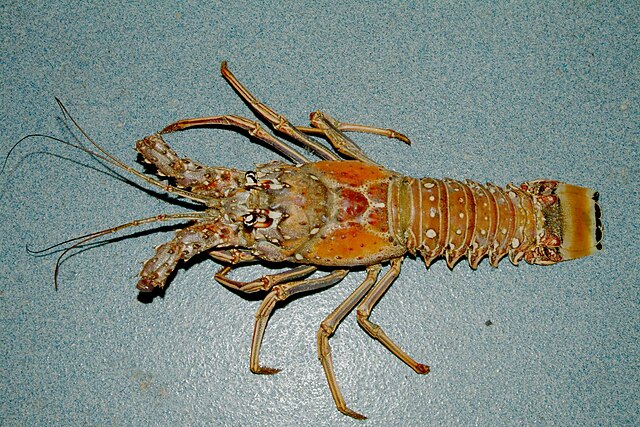U.S.’ President Donald Trump on July 30, 2025 enforced 50% tariffs on 47.4% of imports from Brazil including lobster, effective August 6.
In the executive order, some 43.4% of imports, inclusive of Embraer planes and orange juice, escaped tariffs.
But it is bilateral seafood trade for key frozen commodities from sea bream to lobster that has attracted considerable interest.
According to Cadu Villaca, head of the National Fishing and Aquaculture Collective (CONEPE), almost 70% of local lobster exports reach the United States.
As of 2023, Brazil was averaging $60 billion annually in lobster exports to the U.S., which supported over 15,000 fishermen.
Shipments constitute warm-water spiny lobster species, namely Panulirus argus or red lobster and P. laevicauda or green lobster.
By 2022, however, niche lobster tail product exports to the U.S. had slumped by 47% annually from those of 2017.
These diminishing returns illustrate why high duty could cripple a sector whose supply chain mainly targets the American market.
It now seems inevitable that importers will pressure fishers with costs and in turn raise the market prices of lobster.
Exceptionally, consumer purchases of a related seafood export, namely sea bream, are currently happening at meager rates.
According to Villaca, one company’s weekly unit prices for sea bream fell from 40 reais ($7.17)/kg to 26 reais ($4.66) in late July 2025.
If tariffs hit in a week’s time, a considerable seafood industry could therefore expect a deep trade shakeup. As such, the below statistics illustrate further how lobster from Brazil has historically performed locally and stateside.
Brazil Lobster Statistics
Brazil is a major hub of Caribbean spiny lobster such as red lobster (P. argus) and green lobster (P. laevicauda). The two species live mainly on the country’s Northeast coastline. According to the Food and Agriculture Organization (FAO), the country used to rank 5th worldwide in lobster production between 1980 and 2013. Only Canada, the U.S., Indonesia and Australia produced more of the crustacean across this period. The ranking however fell in the early 2020s, with regional neighbors Chile (20,000 tonnes, 2025 estimate) and Cuba (15,000 tonnes) advancing. The below table illustrates decade-by-decade production margins during Brazil’s golden period, ending 2013.
| Year | Production [tonnes] |
| 2013 | 6,726 |
| 2000 | 6,469 |
| 1990 | 9,223 |
| 1980 | 8,023 |
How important is the United States as a destination for Brazil lobster?
The United States absorbs about 70% of Brazil’s lobster exports each year, as of 2025. By 2023, Brazil was earning nearly $60 millon in exports to the U.S.’ market. Primary niche products are frozen spiny lobster and lobster tails. Lobster tail exports to the U.S., however, fell in the 2022-23 period to 1.6 million pounds. This was a 47% drop from a 2017-21 peak of 3.03 million pounds per year. Still, these exports help support an industry in Brazil that employs 15,000 fishermen, as of 2023.
Does Brazil implement fishing measures to reboot lobster production?
In 2014, the national agency CeDePesca estimated a reproducing lobster biomass total of 10,400 tonnes in Brazil, above 2014’s 10,100 tonnes. The agency proposed cutting the Total Allowable Catches for red lobster to 4,700 tonnes per year while lowering green lobster catches to 1,000 tonnes.
